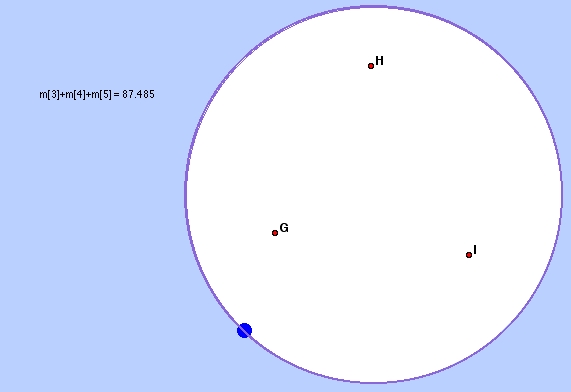
Escher's 1960 Circle Limit IV (Heaven and Hell)

Poincare disc model of hyperbolic geometry
Recall our discussion about
Escher

Escher's 1960 Circle Limit IV (Heaven and Hell) |
Escher based his work on this model:

Poincare disc model of hyperbolic geometry |
|
In this picture, We see three points, G, H and I.
To the left of the model, I've measured the sum of the
angles of the resulting hyperbolic triangle.
We see that this sum is 87.485 degrees!
The following file is an interactive version of the model accessible by clicking on this sheet from the class highlights page. Drag the points H, G and I around to see what happens to the sum of the angles in the resulting hyperbolic triangle and then answer the following questions. Interactive Poincare disk angle sum |

|
